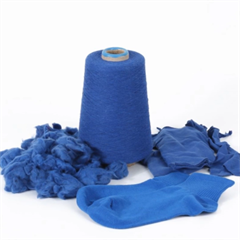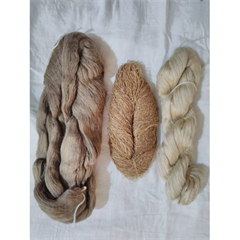Jute yarn and traditional fibers, such as cotton, wool, and silk, each have their own unique characteristics, advantages, and limitations. Here’s a comparison between jute yarn and these traditional fibers:
1. Source:
- Jute Yarn: Jute is a natural fiber derived from the jute plant’s stem. It is primarily grown in regions like India and Bangladesh.
- Traditional Fibers: Traditional fibers like cotton (from cotton plants), wool (from sheep), and silk (from silkworms) have their specific sources.
2. Sustainability:
- Jute Yarn: Jute is often considered more sustainable due to its rapid growth, low water requirements, and minimal use of pesticides and synthetic fertilizers.
- Traditional Fibers: Sustainability varies depending on the farming practices. Organic cotton and sustainable wool and silk production can be eco-friendly, but conventional methods may have a higher environmental impact.
3. Biodegradability:
- Jute Yarn: Jute yarn is completely biodegradable, breaking down naturally without harming the environment.
- Traditional Fibers: Cotton, wool, and silk are also biodegradable, but synthetic fibers like polyester are not.
4. Texture and Appearance:
- Jute Yarn: Jute has a coarse and textured appearance, giving it a rustic and natural look.
- Traditional Fibers: Traditional fibers vary widely in texture and appearance. Cotton is soft and breathable, wool is warm and insulating, and silk is smooth and luxurious.
5. Strength and Durability:
- Jute Yarn: Jute yarn is strong and durable, making it suitable for various applications like packaging, textiles, and construction.
- Traditional Fibers: The strength and durability of traditional fibers vary. Wool and silk are known for their durability, while cotton may be less robust.
6. Versatility:
- Jute Yarn: Jute is versatile but is often used in specific applications such as textiles, packaging, and crafts.
- Traditional Fibers: Traditional fibers are used in a wide range of applications, from clothing and home textiles to industrial and medical uses.
7. Comfort:
- Jute Yarn: Jute can be coarse and less comfortable when used directly against the skin in clothing.
- Traditional Fibers: Cotton, wool, and silk are known for their comfort and are commonly used in clothing and bedding.
8. Processing:
- Jute Yarn: Jute requires specialized processing due to its coarse texture, involving retting, stripping, and spinning.
- Traditional Fibers: Traditional fibers have well-established processing methods.
9. Cost:
- Jute Yarn: Jute is often less expensive than traditional fibers, making it an economical choice for various applications.
- Traditional Fibers: The cost of traditional fibers can vary depending on factors like quality, source, and processing.
10. Cultural Significance:
- Jute Yarn: Jute has cultural significance in regions where it is grown, particularly in South Asia.
- Traditional Fibers: Traditional fibers also have cultural and historical importance in various parts of the world.
In summary, the choice between jute yarn and traditional fibers depends on the specific application, desired characteristics, and sustainability considerations. Jute yarn is valued for its eco-friendliness and strength, while traditional fibers offer a wide range of textures and properties suitable for various uses.
























